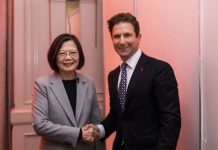Vietnam is fast becoming a major player in the global textiles and clothing industry, offering a wide range of high-quality products at competitive prices. The country is known for its abundant resources and skilled workforce, making it an attractive destination for companies looking to source garments and textiles.
In this guide, EUBusinessnews’ team analyze the benefits of sourcing garments and textiles in Vietnam, the types of products available, and key considerations for companies looking to take advantage of this growing market.
How do you source clothes from Vietnam?
Sourcing clothes from Vietnam involves several steps, including identifying your target market, finding the right suppliers, and negotiating prices and delivery times. Here is a step-by-step guide to sourcing clothes from Vietnam:
- Identify your target market: Determine the type of clothes you want to source and the target market you want to reach. This will help you focus your efforts and ensure you find the right suppliers to meet your needs.
- Research potential suppliers: Use online resources, trade fairs, and industry events to research potential suppliers in Vietnam. Make a list of potential suppliers and contact them to get a better understanding of their products, prices, and delivery times.
- Negotiate prices and delivery times: Once you have a shortlist of potential suppliers, negotiate prices and delivery times to ensure you get the best deal possible. Make sure you are clear about your requirements and be open to compromises where necessary.
- Place your order: Once you have agreed on the terms, place your order and arrange for payment. Make sure you have a clear understanding of the delivery times and any special requirements for shipping.
Steps 2 and 3 can be done with the help of a sourcing company if this is your first time sourcing textile and garments in Vietnam. To learn more about how to get started, you can watch the in-depth video below made and read more here.
As a growing economy with a large pool of skilled labor, Vietnam has become a popular destination for companies looking to source their garments and textiles. The country offers a number of advantages that make it a smart choice for businesses in the industry.
Advantages of Sourcing Garments and Textile in Vietnam
- Cost-Effective: Vietnam is well known for its low labor costs, which makes it a cost-effective destination for sourcing garments and textiles. The country has a large pool of skilled workers, and wages are significantly lower compared to other countries in the region. This, in turn, helps companies reduce their overall production costs, making it an ideal place to source products.
- Strong Supply Chain: Vietnam has a well-developed infrastructure and a strong supply chain network, making it easy to source raw materials and transport finished products. The country has a large network of ports and airports, making it easy to import and export goods. Additionally, many international shipping lines have established direct routes to Vietnam, which makes it easy for companies to manage their supply chains.
- Diverse Product Offerings: Vietnam offers a wide range of garments and textiles, including woven and knit products, denim, and technical textiles. The country has a strong tradition in garment production, and has developed a reputation for producing high-quality products. Additionally, many companies in Vietnam have invested in new technologies, which has helped to improve the quality and consistency of their products.
- Supportive Government: The Vietnamese government has been supportive of the textiles and clothing industry, providing incentives and support to companies that invest in the country. The government has also established a number of trade agreements, which makes it easier for companies to import and export goods.
Vietnam is known for producing a wide range of high-quality textiles, including woven and knit products, denim, and technical textiles. Some of the most popular textiles from Vietnam include cotton, silk, and rayon. Additionally, many companies in Vietnam have invested in modern technologies, enabling the production of high-quality and consistent products.
What clothing brands are produced in Vietnam?
Vietnam has quickly become a hub for the global textiles and clothing industry, offering numerous advantages to companies looking to source their products. In recent years, a growing number of international clothing brands have started to manufacture their products in Vietnam, taking advantage of the country’s strong supply chain, cost-effectiveness, supportive government, and diverse product offerings.
Some of the top clothing brands that are produced in Vietnam include Zara, H&M, Uniqlo, Tommy Hilfiger, and Levi’s, among others. These brands have recognized the benefits of sourcing their products in Vietnam and have set up production facilities in the country to take advantage of its favorable business environment.
Zara, one of the largest fast-fashion retailers in the world, has a significant presence in Vietnam and sources a large portion of its products from the country. The brand has set up multiple production facilities in Vietnam, taking advantage of the country’s strong supply chain network and low labor costs.
H&M, another leading fast-fashion retailer, also has a significant presence in Vietnam. The brand has set up production facilities in the country to take advantage of its favorable business environment, diverse product offerings, and strong supply chain network.
Uniqlo, the Japanese clothing brand, is another brand that has established a strong presence in Vietnam. The brand sources a large portion of its products from the country, taking advantage of its low labor costs and well-established infrastructure.
Tommy Hilfiger, the American clothing brand, is yet another brand that has set up production facilities in Vietnam. The brand has recognized the benefits of sourcing its products in the country, including its strong supply chain network and cost-effectiveness.
Levi’s, the American denim brand, is another brand that has established a presence in Vietnam. The brand sources a large portion of its products from the country, taking advantage of its strong supply chain network and favorable business environment.
Types of Garments and Textile Products in Vietnam
- Woven Products: Vietnam is known for its high-quality woven products, including shirts, pants, and jackets. The country has a large number of weaving factories, which have invested in new technologies, making it possible to produce a wide range of products at competitive prices. Additionally, many companies in Vietnam specialize in producing high-end woven products, such as suits and dresses, making it possible to find a wide range of products in the country.
- Knit Products: Vietnam is also a major producer of knit products, including t-shirts, sweaters, and skirts. The country has a large number of knitting factories, which have invested in new technologies, making it possible to produce a wide range of products at competitive prices. Additionally, many companies in Vietnam specialize in producing high-end knit products, such as cashmere and silk products, making it possible to find a wide range of products in the country.
- Denim: Vietnam is quickly becoming a major player in the global denim market, offering a wide range of high-quality denim products at competitive prices. The country has a large number of denim factories, which have invested in new technologies, making it possible to produce a wide range of products at competitive prices. Additionally, many companies in Vietnam specialize in producing high-end denim products, such as organic and sustainable denim, making it possible to find a wide range of products in the country.
- Technical Textiles: Vietnam is also a major producer of technical textiles, including waterproof and breathable fabrics. The country has a large number of factories that specialize in producing high-tech fabrics, have applications in a variety of industries, such as outdoor gear, sports equipment, and medical supplies. The high quality and low cost of these products make Vietnam a leading destination for sourcing technical textiles.
Key Considerations for Companies Sourcing Garments and Textile in Vietnam
Here is a list of criterias and things you must be aware of before using a sourcing company in Asia or working with a manufacturer in Vietnam.
- Quality Control: Ensuring the quality of the products is an important consideration for companies sourcing in Vietnam. It is important to work with a reliable supplier that has a track record of producing high-quality products. Companies should also conduct regular quality control checks to ensure that the products meet their standards.
- Labor and Environmental Regulations: Companies sourcing in Vietnam must be aware of the country’s labor and environmental regulations. The Vietnamese government has established strict laws to protect workers and the environment, and companies must adhere to these regulations to maintain their reputation and avoid penalties.
- Intellectual Property Rights: Protecting intellectual property rights is an important consideration for companies sourcing in Vietnam. Companies must ensure that their products are not being copied or infringed upon, and should work with a reliable supplier that has experience in protecting intellectual property rights.
- Communication: Good communication is essential for companies sourcing in Vietnam. It is important to establish a clear line of communication with the supplier to ensure that any issues are addressed promptly. Companies should also be aware of the language and cultural differences, and should work with a supplier that has experience working with international clients.
Vietnam currently offers a wide range of high-quality products at competitive prices, a strong supply chain network, and a supportive government on the textile and garments industry.
Foreign buyers considering buying Made in Vietnam products should consider the key factors discussed in this article, such as quality control, labor and environmental regulations, intellectual property rights, and communication, to ensure a successful and smooth sourcing experience.





































